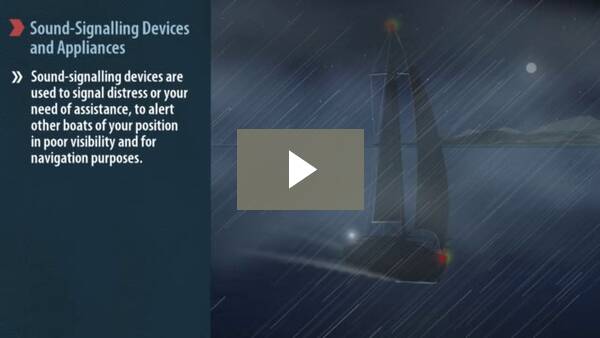Navigation equipment (like sound signals and navigation lights) are required on all boats in Canada. Their purpose is to attract the attention of other boaters and to aid with navigation on the water.
Sound-Signalling Devices and Appliances
The Small Vessel Regulations require that all boats carry some form of sound-signalling device, such as a whistle or horn. The requirement depends on your type and size of boat. Approved sound-signalling devices and appliances must be audible for a minimum of 0.93 km.
Sound-signalling devices are used to signal distress or your need of assistance, to alert other boats of your position in poor visibility and for navigation purposes.
Types of Sound-Signalling Devices Include:
- Mechanical (floatless) whistle
- Horn
- Portable compressed air horns
- Bell–required if your boat is greater than 20 m
Safe Boating Tip
You should attach a Marine Blast Whistle to your life jacket or PFD so that you’ll be able to signal for help if you become stranded in the water.
Navigation Lights
You are required to display your navigation lights between sunset and sunrise. Navigation lights must also be exhibited during periods of reduced visibility such as fog or heavy rain conditions.
If operating a non-powered craft that does not have fixed navigation lights, then you must have a watertight flashlight or lantern that can emit a white light.
Radar Reflector
A radar reflector is a metallic device that is used to identify the position of your boat to other vessels equipped with radar. Radar reflectors are required for boats under 20 m and boats that are built of mostly non-metallic materials. The radar reflector should be suspended above all equipment and as high as possible.
A radar reflector is not required if:
- It is impractical to mount on your boat
- Traffic conditions are limited and no other vessels use radar
- You are operating during daylight hours in good weather conditions
- The use of radar reflector is not essential for safe operation of your craft




